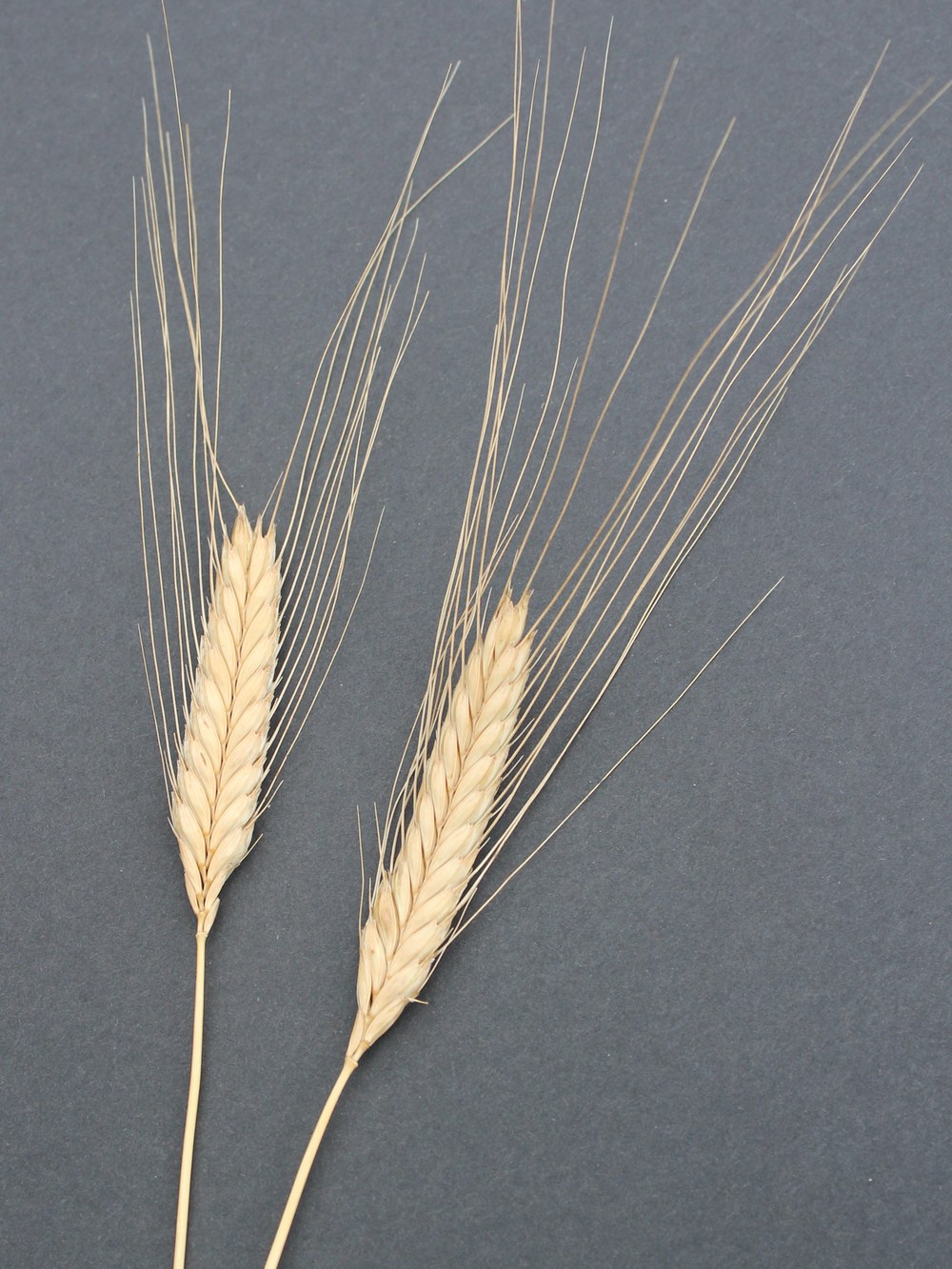Einkorn is one of the oldest ancestors of wheat. Cultivation dates back to 8000BC. It is a diploid, with 14 chromosomes, compared to 42 in modern wheat. The grain has higher protein than modern wheat and is considered more nutritious. There some evidence that einkorn contains a less toxic form of the gliadin protein, which may reduce the toxicity to consumers with gluten sensitivities.

Einkorn
Einkorn Evaluations
This project was designed to evaluate some potential einkorn varieties in an organic system. Einkorn is an ancient grain and like emmer is a hulled grain, which needs to be dehulled before milling. Einkorn actually is a predecessor of emmer. It is relatively low yielding but markets for einkorn flour have been developing and some production is occurring in Pennsylvania. It is used in bread, crackers and other products.
Studies were conducted for three years at in New York and Pennsylvania and North Dakota in collaboration with colleagues from Cornell University, North Dakota State University and the Organic Research and Information Network.
These data are summarized from the original organic variety reports at Cornell University Small Grains Cultivar Testing website. This work was supported by National Institute of Food and Agriculture, USDA award #2011-51300-30697.
Spring einkorn lines were evaluated collaboration with colleagues at both Cornell Freeville, NY, and Wilsboro, NY and three locations in North Dakota, North Dakota State University, Cathay, ND and Robinson, ND (Table 1).
At the PA location, spring einkorn lines were planted in early April, and topdressed with pelletized poultry manure at 70 lb N/acre. Yields averaged 1600 lb/a across all locations and 668 lb/a at the Penn State location. Two of the top yielding lines across all locations were TM23 and WB Alpine.
Yields were generally down in the eastern environments outside of North Dakota. Yields in the PA tests (Table 2) were impacted some by weed issues which caused some of the reduced yields. To avoid weed competition, it would be best to grow this crop in a situation where the weed pressure is due to a well managed previous crop. Also, the Rock Springs location was the most southern of all the locations. At the PA location, the crop headed in late June and was ready for harvest in early August. These results suggest that einkorn in a relatively low yielding crop in our region but limited grain production of it is possible.
Table 1. Spring einkorn performance during 2012-2015 at Freeville (FV), NY, North Dakota State University (NDSU), Cathay, ND (NDCath) and Robinson, ND (NDRob) Rock Springs, PA (PA), and Willsboro, NY (WB).
| Entry | Variety | Yield1 FV | Yield1 NDSU | Yield1 NDCath | Yield1 NDRob | Yield1 PA | Yield1 WB | Yield1 Mean | Yield1 Rank | Bushel weight2 Mean | Bushel weight2 Rank | Lodging Mean | Height (in) Mean | Heading Date |
|---|---|---|---|---|---|---|---|---|---|---|---|---|---|---|
| 1 | PI538722 | 836 | 2860 | 1904 | 1868 | 504 | 1052 | 1504 | 3 | 33.3 | 2 | 3.4 | 40.2 | 28-Jun |
| 2 | TM23 | 1272 | 3752 | 2088 | 2028 | 748 | 680 | 1760 | 1 | 34.0 | 1 | 2.7 | 37.8 | 27-Jun |
| 3 | WB Apline | 564 | 3152 | 2360 | 1460 | 756 | 892 | 1532 | 2 | 29.9 | 3 | 3 | 41.3 | 6-Jul |
| Mean | 892 | 3256 | 2116 | 1784 | 668 | 876 | 1600 | 32.5 | 3 | 39.8 | 30-Jun |
1Yield = (lb/ac)
2Bushel weight (lbs/bu)
Table 2. Spring einkorn performance during 2013-2014 at Rock Springs, PA.
| Entry | Variety | Yield1 2013 | Yield1 2014 | Yield1 Mean | Yield1 Rank | Bushel weight2 2013 | Bushel weight2 2014 | Bushel weight2 Mean | Bushel weight2 Rank |
Lodging (0-5scale) Mean |
Height (in) Mean | Heading Mean |
|---|---|---|---|---|---|---|---|---|---|---|---|---|
| 1 | PI538722 | 316 | 696 | 504 | 3 | - | 32.2 | 32.2 | 3 | 3.1 | 40.6 | 27-Jun |
| 2 | TM23 | 284 | 1208 | 748 | 2 | - | 38.7 | 38.7 | 1 | 2.3 | 37.8 | 27-Jun |
| 3 | WB Apline | 400 | 1108 | 756 | 1 | - | 36.0 | 36.0 | 2 | 1 | 39.8 | 27-Jun |
| Mean | 332 | 1004 | 668 | - | 35.7 | 35.7 | 2.1 | 39.4 | 27-Jun |
1Yield = (lb/ac)
2Bushel weight (lbs/bu)
PDF document, 343.2 KB
This is a downloadable summary of the grain yield and quality results for spelt, emmer, and einkorn.

